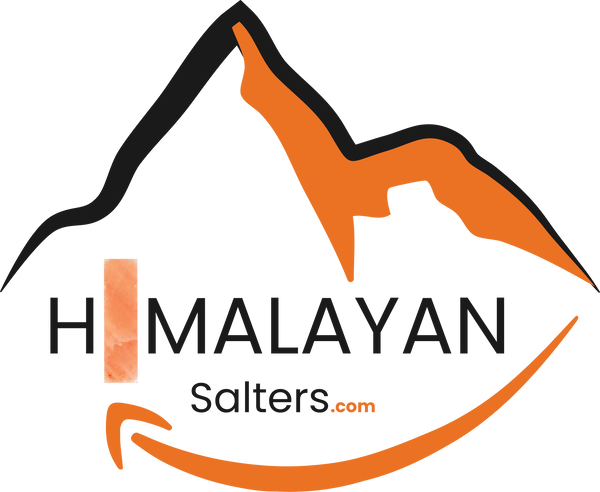A secret treasure that has the potential to improve the health of your cattle is found deep inside the majesty of the Himalayas. The gift that nature gives to cattle is Himalayan salt lick, which is often referred to as "salt lick. Mineral-rich rocks benefit cattle in more ways than simply salt intake. This blog will explain how licking salt for animals improves their health.
The Essence of Salt Licking:
What is Salt Lick?
A small block of pure, unprocessed pink Himalayan salt is mostly sodium chloride. Licking salt includes magnesium, calcium, and potassium, which are vital for cattle’s health.
Why choose Salt Lick?
Opting for licing salts for your cattle is a wise decision for several reasons. salt lick offer:
- Balanced Nutrition: Himalayan salt lick provides a well-rounded mineral profile that aids in maintaining your cattle's health.
- Improved Hydration: The mineral content in salt lick encourages your cattle to drink more water, preventing dehydration.
- Healthier Digestion: The minerals in the salt lick support the digestive system, promoting better nutrient absorption.
- Reduced Stress: Cattle have a natural craving for salt, and providing them with licking salt reduces stress and boredom.
The Benefits of Using Licking Salt:
1. Enhanced Growth and Development
Licking salt plays a crucial role in the growth and development of your cattle. The minerals they contain contribute to strengthening bones and muscles, which ultimately results in healthier and more robust livestock.2. Improved Immune System
A strong immune system is important for cattle, especially when exposed to various environmental stressors. The minerals in Himalayan salt lick bolster your cattle's immune response, which makes them more resilient to diseases.
3. Maintaining Optimal Electrolyte Balance
Maintaining the right balance of electrolytes is vital for cattle. Licking salt helps in this regard by ensuring your livestock gets the necessary minerals to keep their electrolyte levels in check.
4. Enhanced milk production
Dairy farmers, take note! Licking salt leads to increased milk production. The minerals in the salt lick have a positive impact on lactating cows, resulting in higher milk yields.
Choosing the Best Licking Salt for Deer: Factors to Consider
When selecting licking salt for your cattle, keep these factors in mind:
- Purity: Ensure the salt lick is 100% pure Himalayan salt, free from contaminants.
- Size: Choose the appropriate size based on the number of cattle you have.
- Placement: Position the salt lick in an easily accessible area for your cattle.
Proper Use of Himalayan salt lick
When introducing Himalayan salt lick to your cattle, it's essential to follow a few guidelines:
Gradual Introduction:
Start by offering the salt in small quantities. This helps your cattle get used to the new addition to their diet.
Placement:
Position the salt lick in an area where your cattle frequently gather, such as near their feeding troughs or watering stations. This ensures they have easy access.
Monitoring Consumption:
Keep an eye on how much salt your cattle consume. While they have a natural craving for salt, excessive intake can be harmful. Ensure they always have access to fresh water.
Taking care of your cattle's health
Regularly monitoring your cattle's health is crucial when using lick salt. Look for signs of improvement, such as shinier coats, increased milk production (if applicable), and overall vitality. If you notice any adverse effects, such as excessive salt intake, consult a veterinarian.Sustainability and ethical sourcing
The Ethical Aspect
Licking salt is not only beneficial for your cattle but also for the environment. It is sourced sustainably from ancient salt deposits in the Himalayan mountains. When you choose Himalayan salt, you're supporting ethical and environmentally friendly practices.
Reducing Environmental ImpactUnlike some commercial licking salts, they do not contain harmful additives or chemicals that leach into the soil. This reduces the environmental impact on your grazing land and helps maintain its natural balance.
Tips for Maintaining a Himalayan Salt Lick
Cleaning and Refreshing
To ensure the longevity of licking salt and to keep it enticing for your cattle, periodically clean it. Use a stiff brush and warm water to remove any accumulated debris. Additionally, replacing old or significantly diminished salt licks will maintain your cattle's access to essential minerals.
Protection from the Elements
Licking salt is known for its durability, so it's advisable to protect it from extreme weather conditions. If possible, provide a shelter or cover to prevent the lick from dissolving in heavy rain or becoming too hard in freezing temperatures.
DIY Himalayan Salt Lick Holders
Crafty Solutions
If you want to get creative, consider making your own salt-lick holders. Using materials like PVC pipes or wooden blocks, you can fashion custom holders that secure the salt lick in place and prevent it from coming into contact with the ground.
Common Misconceptions About Himalayan Salt Lick
Myths Debunked
- Licking salt is harmful. Some worry that the high salt content could harm cattle. However, when consumed in moderation, salt lick is entirely safe and beneficial for livestock.
- Salt Lick is the same. Not all are created equal. Licking salt stands out due to its natural purity and rich mineral composition, setting it apart from common salt blocks.
- Only for Cattle: While this article has primarily focused on cattle, Himalayan salt lick is suitable for various animals, which makes it versatile for any farm.
FAQs
1. Is Himalayan salt lick safe for all types of cattle?
Yes, Himalayan salt lick is safe for all cattle breeds. They provide essential minerals that benefit cattle of all ages and sizes.
2. How often should I replace the licking salt?
The frequency of replacement depends on the size of the lick and the number of cattle using it. Generally, a large lick can last several months.
3. Can I use the salt lick for other livestock, like goats or horses?
Absolutely! Licking salt is beneficial for a wide range of livestock, including goats, horses, and even wildlife like deer.
4. Is there any side effect to using salt lick?
No, there are no adverse side effects to using Himalayan salt. However, it's essential to provide fresh water alongside the lick to prevent excessive salt intake.
5. Where can I purchase high-quality salt?
You can find reputable suppliers of salt lick at your local agricultural stores or online. Ensure that you choose a trusted source to guarantee the purity of the product.
Conclusion:
The benefits of using salt lick include enhanced growth and development, an improved immune system, maintaining optimal electrolyte balance, and increased milk production. When selecting licking salt for cattle, consider factors such as purity, size, and placement. A gradual introduction is essential, with small quantities being recommended to help cattle get accustomed to the new addition to their diet. Placement should be in an area where cattle frequently gather, such as near feeding troughs or watering stations. Monitoring consumption is crucial, as excessive intake can be harmful. Regular monitoring of cattle's health is crucial when using licking salt, looking for signs of improvement such as shinier coats, increased milk production (if applicable), and overall vitality. If adverse effects, such as excessive salt intake, occur, consult a veterinarian. Himalayan salt lick are not only beneficial for cattle but also for the environment, as they are sourced sustainably from ancient salt deposits in the Himalayan mountains. They do not contain harmful additives or chemicals that leach into the soil, reducing the environmental impact on your grazing land and helping maintain its natural balance. To find Himalayan salt lick, search for high-quality, pure Himalayan salt lick at local agricultural supply stores or online retailers. Be sure to read reviews and check for certifications of purity before making a purchase. Common misconceptions about licking salt include its potential harm to cattle, its natural purity and rich mineral composition, and its suitability for various animals. While some may worry that the high salt content could harm cattle, when consumed in moderation, it is entirely safe and beneficial for livestock.



